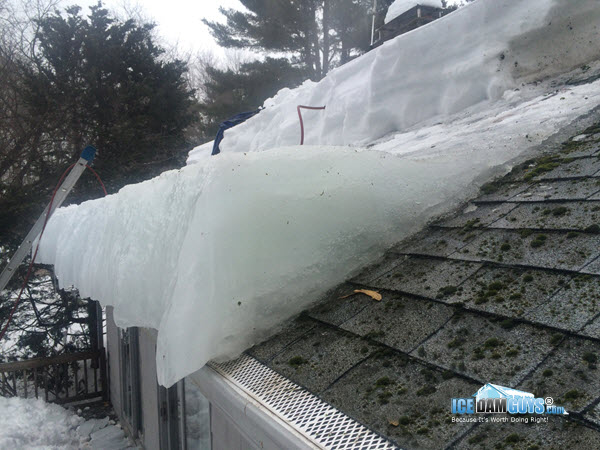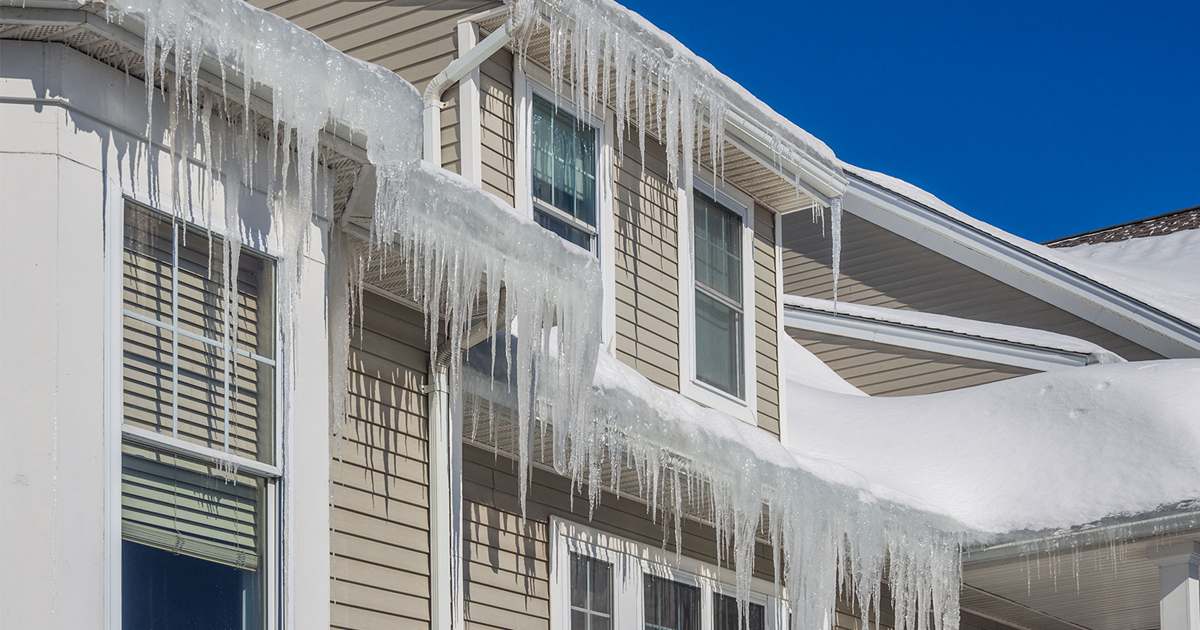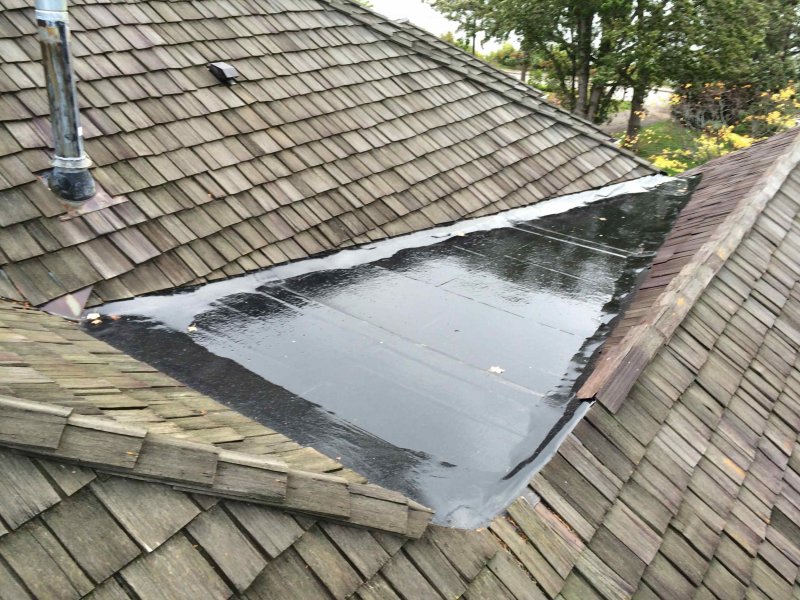The water trickles down between the layer of snow and the shingles until it reaches the eave of the roof which stays cold because it extends beyond the side of the house.
V angled roof ice dams.
Freezing at the eave impedes the drainage of meltwater which adds to the ice dam and causes backup of the meltwater which may cause water leakage into the roof and consequent damage to the building and its contents if the water.
Chimney flashing another vulnerable area for ice dams is around the chimney.
Ice dams and icicles form when the snow melts runs down your roof and refreezes near the edge.
Heat loss from a house snow cover and outside temperatures interact to form ice dams.
An ice dam is an ice build up on the eaves of sloped roofs of heated buildings that results from melting snow under a snow pack reaching the eave and freezing there.
If necessary use a long handled garden rake or hoe to push it into position.
An ice dam forms when the roof over the attic gets warm enough to melt the underside of the layer of snow on the roof.
In valleys of the roof.
With the code recommended installation of the ice barrier over the drip edge water can back up at the eaves edge and get behind the vertical leg of the drip edge where it can end up flowing into the joint between the fascia and the roof sheathing.
In colder regions a good practice is to cover the first 3 feet 36 inches or 0 91 m of roof over heated space with ice and water protector.
Lay the hose onto the roof so it crosses the ice dam and overhangs the gutter.
If ignored ice dams can cause serious damage to your roof gutters paint insulation and interior drywall and.
For ice dams to form there must be snow on the roof and at the same time higher portions of the roof s outside surface must be above 32 degrees f freezing while lower surfaces are below 32f.
Around chimneys and skylights.
L shaped flashing made of steel can be installed by a homeowner or a roofer.
This only occurs when part of your roof warms to above 32 degrees f warm enough to melt the snow while the roof edge remains below freezing.
More critically ice dams can cause meltwater to back up under the shingles where it can flow down and ruin ceiling and wall surfaces.
Purchasing flashing to cover the area where the stones or bricks meet the roof will help prevent ice dams from forming.
At the eaves of the roof by far the most common spot for ice dams heat cables also known as heat tape or.
Nonuniform roof surface temperatures lead to ice dams.
But ice dams can form in the gutter as well as on the roof.
Ice and water protector must reach above the highest expected level of ice dams which will vary by region and the slope of your roof.
The minimum is typically 2 feet 24 inches or 0 60 m above the vertical projection of the inside of the exterior wall.
The most common areas of the home for ice dams to form are.
The calcium chloride will eventually melt through the snow and ice and create a channel for water to flow down into the gutters or off the roof.




























